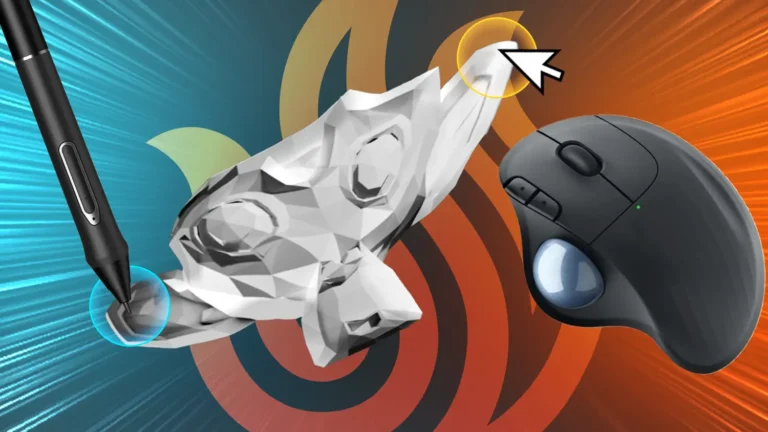There’s inspiration everywhere if you know how to look for it. This philosophy — that’s become my personal mantra — can be applied to all creative careers, including painters, sculptors, and yes, video game design professionals. If you’re hoping to call upon the artistry of the world around you in order to influence your game design and development vision, consider the following tips on how to find inspiration for your video game design ideas.
Learn from Your Idols to Get Your Next Big Video Game Design Ideas
Taking mental notes on those who came before you is a great way to get inspired and find creative video game design ideas. While still a young medium by comparison to the fine arts world, video games are an industry of expression with at least a 30-year history. That means at least 30 years of video game designers who had their own inspirations and their own experiences to draw on. That gives new video game designers a wealth of information and art to explore.

Some students come into my classes surprised that the video games they love draw design ideas and inspiration from art history. Examples include the 2012 stealth-action title “Dishonored” and the 2001 puzzle platformer “Ico,” which itself has become the artistic inspiration for several video games. The game designers for “Ico” drew upon the images of surrealist painter Giorgio de Chirico, while “Dishonored’s” designers drew inspiration from several different artists, such as Italian landscape painter Canaletto and French painter Jean-Eugene Buland.
If you’re an up-and-coming video game designer, you should be taking note of what video game design ideas worked for your idols, what didn’t work for them and how they got where they are today. Of course, when you take the whole breadth of art history, there’s literally hundreds of years’ worth of inspiration — reaching back into the annals of art, music and culture.
Use Existing Forms for Your Creative Video Game Design Ideas
I believe in artistic appropriation — the idea that an artist can take pre-existing images and concepts and use them to inspire their work. This isn’t plagiarism — there’s a whole un-copyrighted well of ideas in the art world. Now, how does this apply to video game designers? Say they want to create an open, vast scene or level. The game designer might draw on scenes from the Hudson River School of artists for inspiration and creative game design ideas — as those artists worked on vast, open scenes that called out with a spirit of exploration. A video game designer might get ideas and inspiration for a crowded cityscape level or scene from metropolises like San Francisco or New York.

At the very least, these existing forms can serve as solid starting points if a game designer wants to have a bit of a personal touch in a video game’s finished look. You can find even more examples of existing forms if you draw game design ideas and inspiration from nature — where the artistic forms are timeless. That’s where Leonardo da Vinci sought his inspiration.
The Well of Inspiration Is Different For All
The fascinating thing about expression and inspiration is that it’s different for every person. Everyone draws their own mood or interpretation from the same pictures, moments and experiences. I conduct creative exercises in my classes about finding inspiration, and I’m always amazed at the wealth of answers and ideas I get from students, especially those in the video game design department.
For example, I might show a photo of a tree branch dipping into a pond with its image reflected on the water — and get several different answers of what that evokes within the same class. This is especially powerful when studying the works of surrealist painters — I ask students what they see in these unusual scenes, and get answers ranging from “monsters” to “Pokémon.” I find this an especially valuable point for game designers working in groups — you each might draw your own views from the same piece of inspiration, and that’s a wonderful thing. It gives you an even deeper well of ideas and thoughts to draw from for your next big video game design.

Why Is This Helpful for a Game Design Professional?
It’s immensely valuable for video game designers to know that the “language of art history” is theirs to use. We’ve all heard the phrase “a picture is worth a thousand words,” but I think once you actively start working in a medium like video games, you understand how immensely valuable that truth is. If you put a painting from Art History in the background on the wall of a scene, you don’t have to necessarily say what the backstory of the scene is. If a viewer knows the meaning of that painting, the deeper story is understood.
From my perspective, artistic language and the inspiration it brings are valuable and irreplaceable for empathy and understanding. They bring all the areas of a video game design together to inspire creative ideas and make a production.
Want to learn more about finding inspiration for your video game design ideas? As the video game industry continuously grows, employers are zeroed in on Game Design and Development Program students who understand both the creative and technical sides of the industry. Nowhere is University of Silicon Valley’s unique ability to combine specializations better demonstrated than in our Game Design & Development Department. All of our Game Design and Development program students get hands-on experience working collaboratively in classes that simulate an actual game development team.
With two areas of degree program concentration—art and writing—the Game Design Art degree program is your launchpad for a career in the creative side of game design. Focusing on environments, characters, story and more, you’ll learn how to create the elements that breathe life into the gameplay experience.
University of Silicon Valley is uniquely poised to offer a meaningful and valuable education for 21st century students. We believe in an education that directly correlates with the work you’ll be doing after you graduate. Interested in learning more? Contact Us today.


